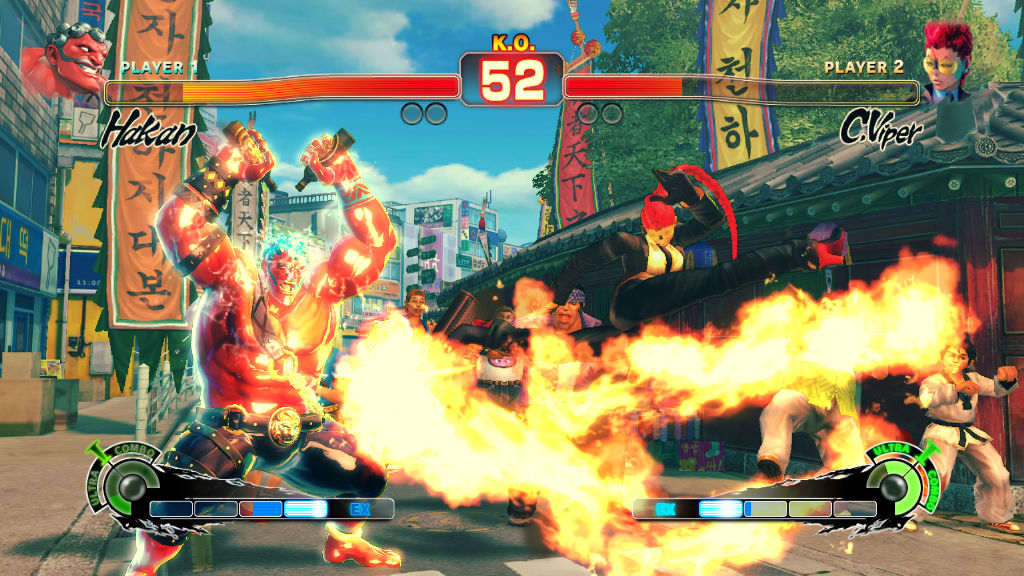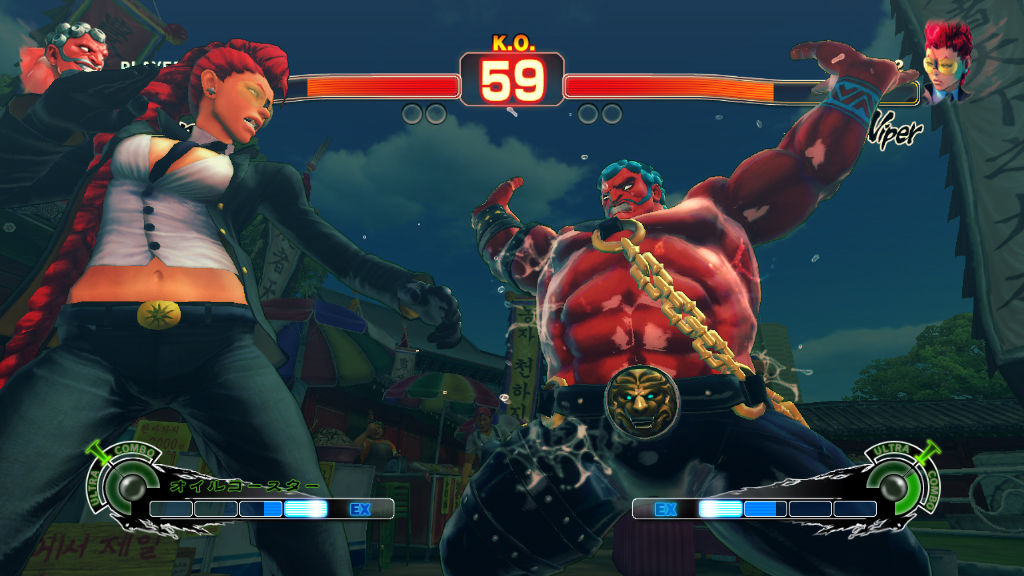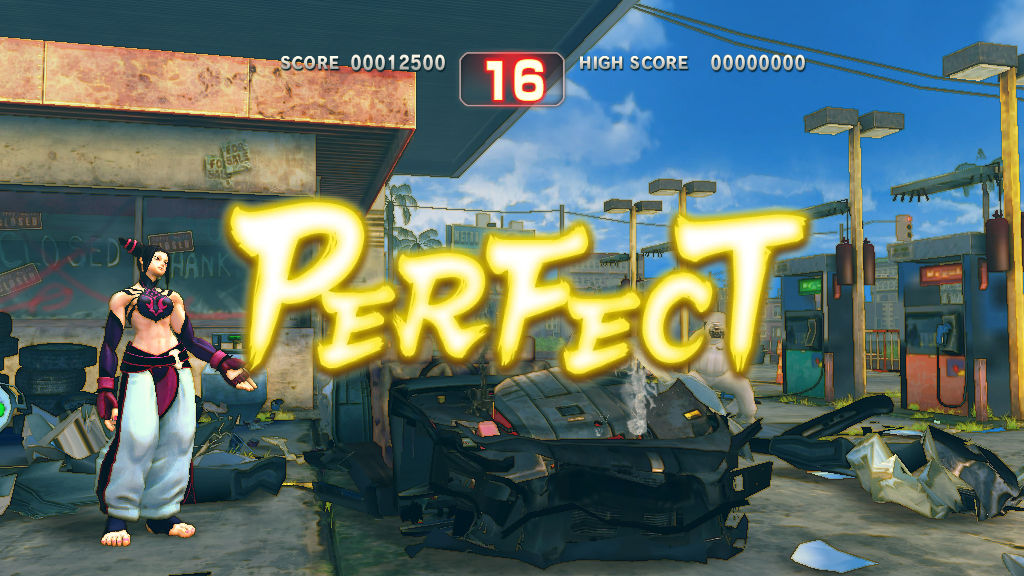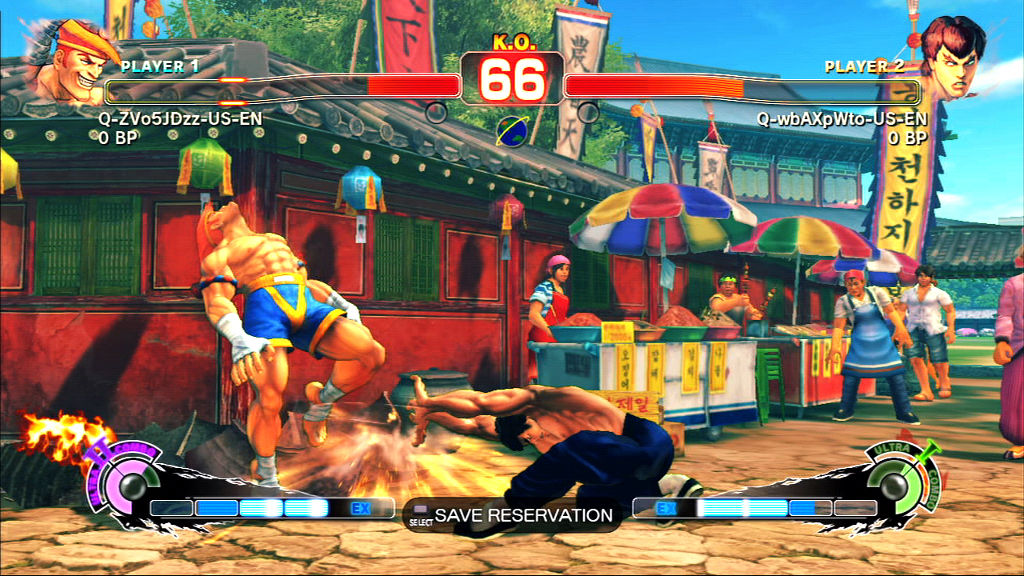In the tradition of fighting games in the 90s, Capcom has just released Super Street Fighter IV, the update to 2009's highly successful Street Fighter IV. Will this be a simple rehash or the supreme version of Street Fighter IV? Read on to find out.
Presentation
The overall graphics engine has not changed from Street Fighter IV, still keeping the 3D models on a 2D plain with an an ink brushed style. Music, on the other hand, has received an upgrade by allowing players to select the arranged character themes rather than the static stage themes gamers were stuck with last year. While the stage music isn't terrible by any means, the arranged music is too good to pass up. Between Cody's theme, which has a slow, hip hop beat to it and Adon's fast paced, rock track, there is a wide selection of themes that match the characters' personas and fights' atmospheres.
Once again, the game allows players to choose between English and Japanese voiceovers. Many of the Japanese voices are memorable, such as Juri's shrieking voice that perfectly fits her sadistic fight lust. The English voice isn't bad either, which has a different take on the character and makes her much more seductive. Without a doubt, however, Hakan's English voice makes the biggest impact. Nothing beats its comical style, which constantly reminds gamers of the laughs they had the first time they heard, "It's time to get oiled up!"
The new stages are amazing, all of which boast interesting visuals, with the most notable stage being Africa's Solar Eclipse. This stage has hippos in the back, periodically tipping over and causing big waves, birds that sporadically swoop in, and background constantly moving in and out of solar eclipse. Compared to Street Fighter IV's bland stages like Oceana's Volcanic Rim, which only features an exploding volcano, Super Street Fighter IV's stages are a shining example of the ideal fighting game stages – eye candy without ever getting in the players' way.
Gameplay
Street Fighter IV was one of the simpler fighting games to pick up and play recently, yet it had enough depth to create an entire competitive community, satisfying both hardcore and casual gamers. Super Street Fighter IV continues that trend by using the same gameplay formula and adding new features to support both parties as well.
The gameplay is simple. Like most 2D fighting games, the goal is to drain the opponent's health using a series of normal attacks, executed by pressing any attack button, or special attacks, executed through combining certain joystick movements with button presses, usually nothing more complicated that quarter circles. Super Street Fighter IV retains the focus attack from Street Fighter IV, which has three levels, all of which are stronger than and encompass the properties of the previous one. Level one can absorb one hit; level two can make an opponent crumple and open for a combo; level three is unblockable and capable of breaking through another focus attack. This system is easy to use, allowing most players to punish other players for predictable play without execution prowess.
Super Street Fighter IV gives each character two ultra combos, which charge up as the character receives damage. Not only does this make for more eye candy, but it gives players new ways to use characters. Sagat, for example, could only use his first ultra in combo situations. With the inclusion of his second ultra, he can now hit his ultra from afar. The inclusion will give even seasoned Street Fighter IV players reason to revisit their old favorite characters.
Conspicuously missing from the last title Street Fighter IV, bonus stages that range from destroying cars and falling barrels are back. While they add nothing to the main gameplay, they are a nice distraction and a fun throwback to the 90s, when fighting games were at their prime.
Online Play
The netplay in Super Street Fighter IV is hit-or-miss. On one hand, it's comprehensive and includes lobbies where up to eight players can join and watch, a replay channel that features viewable matches from others, and ranked battle mode where individual characters have their own points, leaving no doubt as to who is a player's superior character. These are all upgrades from Street Fighter IV's plain modes and as complete an online mode as any fighting game's had so far.
Sadly, this is complimented by subpar netcode. At times, matches can be smooth and a decent substitution for offline competition; at other times, lag can make the game literally stutter or delay inputs by whole seconds.
Change for the better
Rather than just add features to the game, Capcom made adjustments to all the characters to emphasize and fix concerns that players had from Street Fighter IV. While overpowered characters like Sagat and Ryu received some much needed changes to balance them out, weaker characters like Vega and Guile were tweaked and given a fighting chance.
Story...or lackthereof
While it's par for the course for fighting games to include a lackluster story, it's still not acceptable. Super Street Fighter IV's arcade mode provides the characters' story in the form of anime sequences before it begins and after players beat Seth, the final boss. However, not only are they poorly drawn, but they barely provide any memorable story segments. At most, characters have parts of their backstory revealed, never really fleshing out to a full story. This is why Super Street Fighter IV is best as a multiplayer experience.
Bottom Line: Intended Audience Rating
Hardcore fighting game fans, regardless of whether they have Street Fighter IV or not, will enjoy this upgrade. It makes the necessary balancing changes to revitalize a year old game and adds ten new characters, all of whom add new flavors and playing styles. Fans will not only want this game for its new features, but to keep up with the other fighting gamers who will pick this title up. The one thing holding this title back is the netcode, which is nowhere near as smooth as Blazblue: Calamity Trigger, the current king of online fighting game multiplayer. Otherwise, Super Street Fighter IV is the top fighting game players can get their hands on.
4.5 Out of 5 Hadokens
Bottom Line: Overall Rating
Unless casual gamers missed out on Street Fighter IV when it came out last year, there is little here that they have not seen before. The new features will only satisfy those who already like the game and come off as unnecessary for casual players. Super Street Fighter IV is not a must have for casual gamers, but will be as enjoyable a part of their collection as Street Fighter IV.
3 Out of 5 Hadokens







